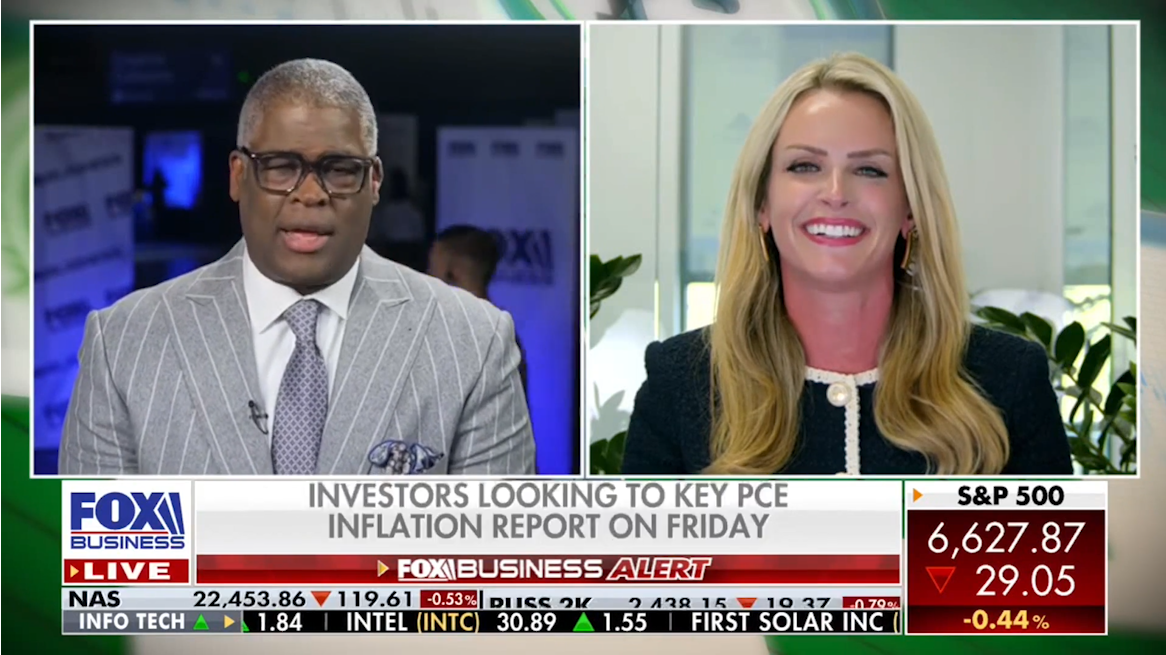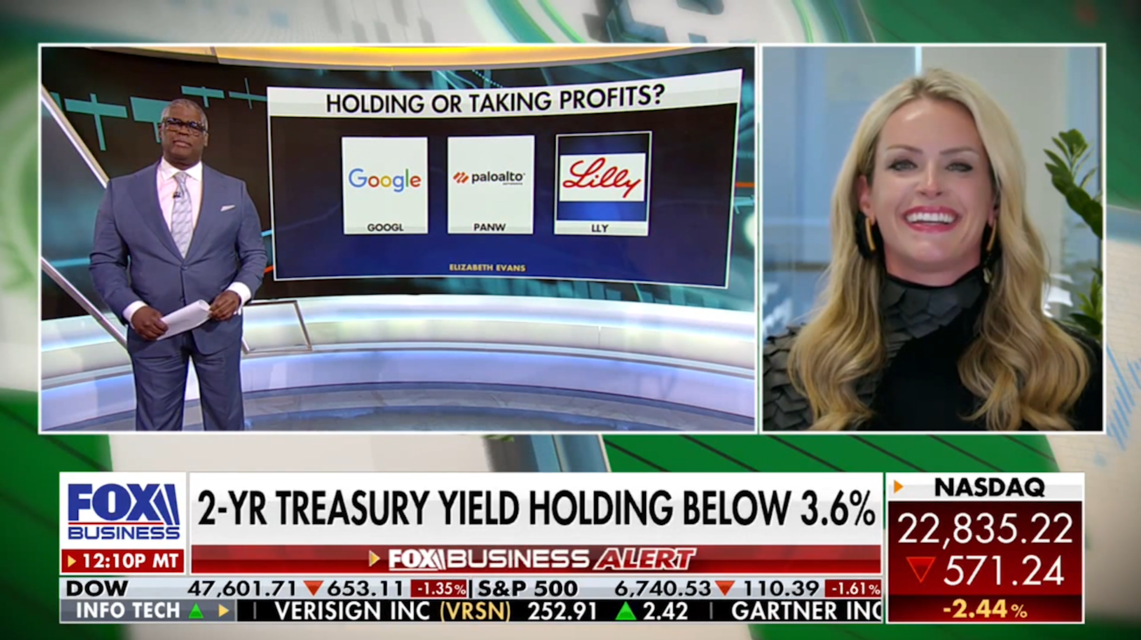Over the past 96 years, the S&P 500 realized volatility has jumped an average of 26% from August to October.
We certainly felt the volatility this April. But the market has been smooth sailing since then. So, how should investors approach the upcoming earnings season?
If you stayed invested since the April lows, you’re already up 38% on the S&P 500. 👍
If you missed out on this run, October might be your chance to get in.
If we do get a pullback in the near term, then I view it as a long-term buying opportunity.
A long-term perspective is what separates successful investors from the rest. 💡
Catch Lizzie’s full conversation with Charles Payne on Fox Business for more insights!
Transcript:
All right, folks. My next guest, she’s also expecting near-term volatility, some turbulence, but says the setup is good going into 2026. Joining me now, Evans May Wealth managing partner Elizabeth Evans.
Market choppiness ahead?
Elizabeth, the market’s starting to get a little bit choppy. I guess this is what you expected. I think the question, though, is for how long does it last and how bad does it get? Lance just talked about how bad a 5% correction would feel, or even a 10%, considering how smooth this market has been.
Well, good afternoon, Charles. And I think Lance is spot on, but let’s take a step back. We are 38% up from April lows, and we’re only 9.2% away from the 12-month price target on the S&P if you look at a bottoms-up standpoint from FactSet. So, I think, you know, if you look at October, October from a seasonal standpoint is typically a very volatile time. If you go back, actually, over the last 96 years and you go from August to October, historically, volatility picks up by 26%, and October earnings season tends to feature the largest earnings-day swings of the entire year.
So, from a seasonality standpoint, there’s typically some volatility. You mentioned elevated valuations on the S&P. We also have somewhat of a higher bar set going into earnings season. You have Fed commentary, FOMC meeting, CPI prints. So, all of that to say, I think we could see a 5% or 10% pullback over the next month or so.
And to Lance’s point, you know, we have not seen that. So, from an investor sentiment standpoint, you would feel a 5% or 10% correction. But any pullback should be viewed as a long-term buying opportunity, especially for those investors who’ve missed out on this run.
So, one thing in your note, you highlighted these big Wall Street firms are now becoming more bullish. Goldman, 6,800 this year 7,200 in 12 months. When you see that is that some form of validation for you?
Should that make our viewers more confident that Wall Street firms are becoming more bullish?
Well, Charles, I’m always amazed at how behind they are on both raising a price target on an individual company or at the index level. I think, going into this week, the aggregate, or the average, December 31st price target was actually 3% below where we are today.
But I do think from a validation standpoint, when you see these targets increased, it means that number one, there is better earnings growth than was previously expected. And number two, that the economic conditions are good, are conducive for growth. So, I think that does bode well for the equity markets. And, to me—we’ve talked at length about AI—it just underscores the investment thesis that AI is contributing to corporate profits, to margins, and that we’re in somewhat of a once-in-a-lifetime supercycle for CapEx spend—all of that coming at a time that interest rates are being cut.
I want to get your thoughts on your stock picks. By the way, I want to take this opportunity to give you props. You got on UnitedHealth a little early, but you got in there before all the big boys, all of them. And you’re doing very well. That’s one of the things I love about you; you go with your conviction. You were a little bit early, but there’s no such thing because you’re making people a lot of money, and everybody loves the stock.
Stock picks?
Let’s talk about some other names you like. Huntington Ingalls, NextEra, and Goldman Sachs. Huntington Ingalls—I don’t think that’s one our viewers are familiar with.
Yeah. So, that is a—we often talk tech stocks—so, this is a small cap play. Huntington Ingalls Industries (HII) is really a pure play on the U.S. Navy shipbuilding. So, right now there’s a duopoly with HII and General Dynamics. So, Huntington, they produce both nuclear and non-nuclear Navy ships, and that includes all 31 aircraft carriers. They’ve been doing this since 1933.
So, what we’ve heard from the Pentagon and the U.S. government, we know that they’re increasing their investment and their dollars to the U.S. Navy and its shipbuilders, which should directly impact, from a positive standpoint, HII. So, they’ve increased their operations, they’ve increased their margins. And, from an investor standpoint, we have a purview into the next 4.8 years of revenue.
They’ve got $56.9 billion in backlog. So, that’s a small cap play that’s trading at a discount to the market with a 2% dividend yield. Elizabeth, great stuff. Love the way you laid out the fundamental analysis. Great stuff. Thank you so much. Talk to you again real soon. Thank you, Charles.




